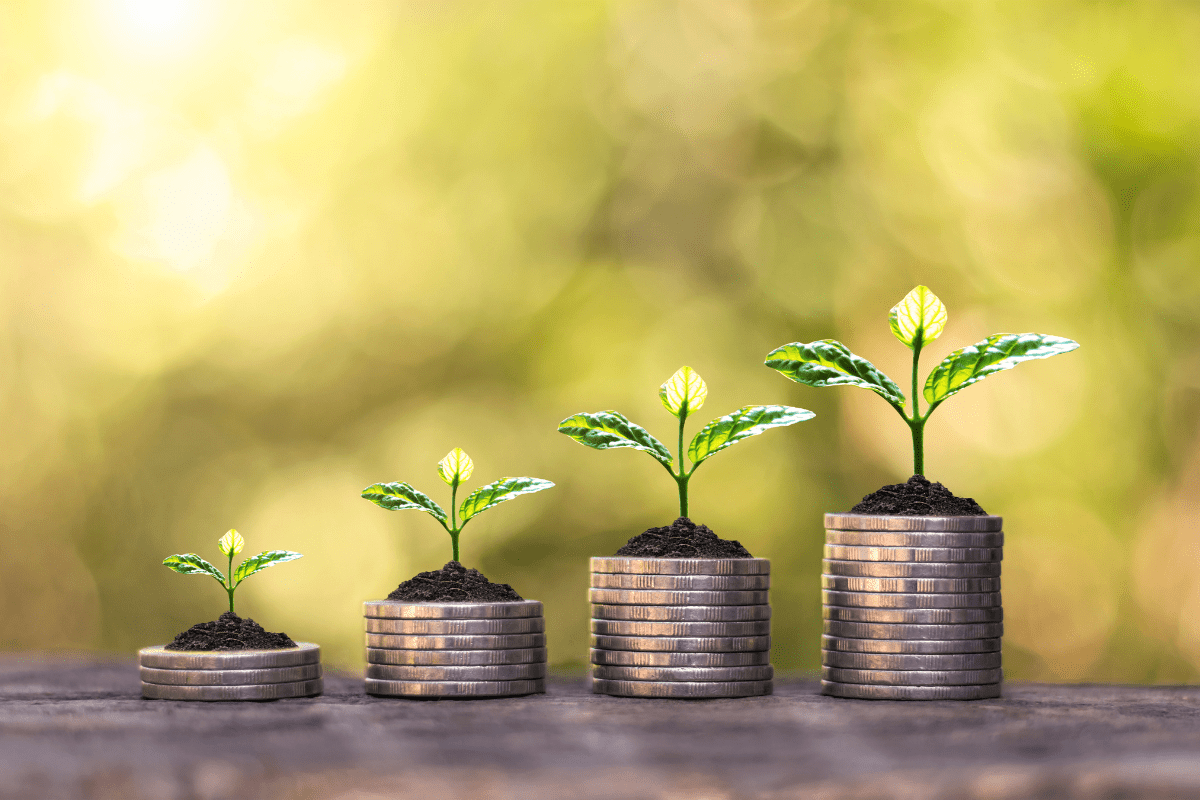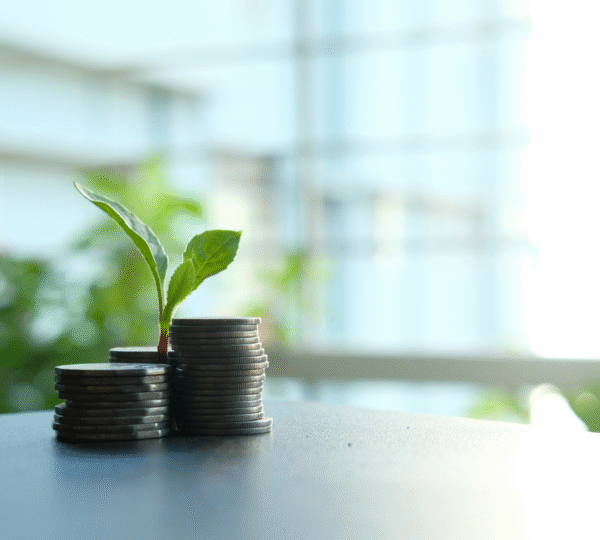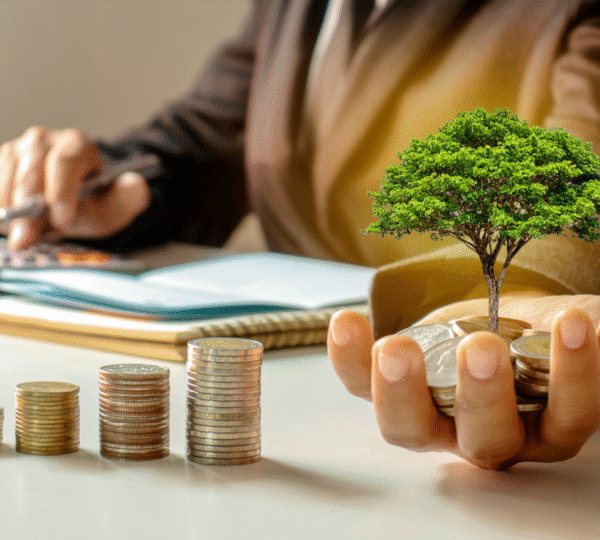
Green Investing for Beginners
When Sarah got her first full-time job, she was excited about finally being able to invest. But as she browsed through mutual funds and stock options, she felt uneasy. Many of the companies that promised growth were involved in oil drilling, fast fashion, or industries that harmed the planet. She asked herself, “Is it possible to grow my money without funding practices I do not believe in?”
That search led her to green investing. A growing movement where investors align their financial goals with their environmental and ethical values. For beginners like Sarah, green investing offers the chance to make money while making a difference.
What Is Green Investing?
Green investing, also called sustainable or ethical investing, focuses on supporting companies and funds that have positive environmental, social, and governance (ESG) practices.
This could mean:
- Investing in renewable energy companies.
- Choosing funds that avoid fossil fuels.
- Supporting firms that prioritize fair labor practices and responsible governance.
In short, it is about earning returns while also contributing to a sustainable future.
Fun Fact: According to Morningstar, global sustainable fund assets surpassed $2.7 trillion in 2023. This shows that green investing is not a small niche anymore but a mainstream movement in finance.
Expert Insight: Larry Fink, CEO of BlackRock, the world’s largest asset manager, stated, “Climate risk is investment risk. Companies that do not plan for a carbon free economy will find themselves on the wrong side of history.”
For beginners, this means green investments are not just ethically appealing, they can also be financially smart.
Why Green Investing Matters
- Aligns money with values – Your investments support industries you believe in.
- Potential long term returns – Green sectors like renewable energy and electric vehicles are growing rapidly.
- Resilience – Sustainable companies often perform better during crises because they focus on long term planning.
Fun Fact: Companies in the MSCI World ESG Leaders Index often outperform traditional indexes over long periods.
Common Myths About Green Investing
- Myth 1: It means lower returns.
Studies show sustainable funds perform as well or better than conventional funds. - Myth 2: It is only for wealthy people.
Beginners can start with small amounts through apps and robo advisors that offer green portfolios. - Myth 3: It is just a trend.
Green investing has been growing for over 20 years and is backed by global policies like the Paris Climate Agreement.
How Beginners Can Get Started with Green Investing
1. Learn the Basics of ESG
ESG stands for Environmental, Social, and Governance. These three factors measure how sustainable a company is.
- Environmental: How a company manages carbon emissions, waste, and renewable energy.
- Social: Employee rights, community impact, diversity, and inclusion.
- Governance: Ethical leadership, transparency, and shareholder rights.
Understanding ESG is the foundation for making informed investment decisions.
2. Start Small with Green Mutual Funds or ETFs
For beginners, exchange traded funds (ETFs) and mutual funds are an easy way to invest in multiple green companies at once.
Examples include:
- iShares Global Clean Energy ETF
- Vanguard FTSE Social Index Fund
- SPDR S&P 500 Fossil Fuel Reserves Free ETF
These funds pool investments into companies committed to sustainability, making it easy for new investors to diversify without heavy research.
3. Explore Green Bonds
Green bonds are loans made to fund environmental projects, such as renewable energy or sustainable housing. Governments, banks, and companies issue them, and they are becoming popular for safe, beginner friendly investing.
Expert insight: According to the Climate Bonds Initiative, global green bond issuance reached $500 billion in 2023, showing strong demand for climate friendly projects.
4. Use Robo Advisors and Apps
Several investment platforms now offer automated portfolios focused on sustainability. Apps like Betterment, Wealthsimple, and Ellevest allow beginners to start with as little as $10, while automatically balancing portfolios toward green investments.
5. Research Before You Buy
Not all funds labeled “green” truly are. Some may engage in “greenwashing,” where companies exaggerate their environmental impact. Beginners should check resources like:
- Morningstar Sustainability Ratings
- MSCI ESG Ratings
- Sustainalytics
These platforms rank funds and companies on real sustainability performance.
Practical Tips for Beginners
- Set clear goals: Decide if you want growth, income, or impact.
- Balance risk: Do not put all your money in one green stock. Spread it across funds and bonds.
- Stay updated: Policies and technologies change fast in sustainability. Follow news about renewable energy, electric vehicles, and carbon policies.
- Think long term: Green investments often reward patient investors who believe in long range growth.
Fun Fact: A Morgan Stanley survey found that 95 percent of millennials are interested in sustainable investing. This generational shift is pushing big banks and funds to adapt. If you are a beginner, you are joining a movement that is already shaping the future of finance.
Risks to Keep in Mind
Like any investment, green investing carries risks. Renewable energy companies may depend on government subsidies. Some sustainable funds may have higher fees. And industries like electric vehicles face strong competition.
Expert insight: Jon Hale, head of sustainability research at Morningstar, notes, “Investors should be realistic. Sustainable investing is not a guaranteed win, but it offers competitive returns while addressing climate risks.”
For beginners, this means balancing enthusiasm with cautious research.
Everyday Ways to Support Green Finance
Investing is not the only way to support sustainability. Many banks now offer green savings accounts that use deposits to fund renewable projects. Credit cards like Aspiration and TreeCard help plant trees with every purchase. Even choosing sustainable pension funds at work can make a difference.
Case Study: Tesla’s Role in Green Investing
Tesla is often cited as a classic green investment. For early investors, the stock brought massive returns. However, it also shows the risks, with high volatility and debates around governance.
The lesson for beginners is clear: do not chase hype. Diversify across multiple green sectors like wind, solar, and water infrastructure.
Closing Story
Months after Sarah began her green investing journey, she noticed something unexpected. Her portfolio was not only growing, but she also felt a sense of pride knowing that her money was supporting clean energy and ethical businesses. It was no longer just about making returns. It was about being part of a movement to build a better future.
And for beginners, that is the true beauty of green investing. It turns personal finance into a tool for global change.
References
- Morningstar (2023). Global Sustainable Fund Flows Report.
- BlackRock (2022). Letter to CEOs on Climate Risk.
- Climate Bonds Initiative (2023). Green Bond Market Summary.
- Morgan Stanley (2022). Sustainable Signals Report.
- Hale, J. (2022). Morningstar Sustainability Research.












